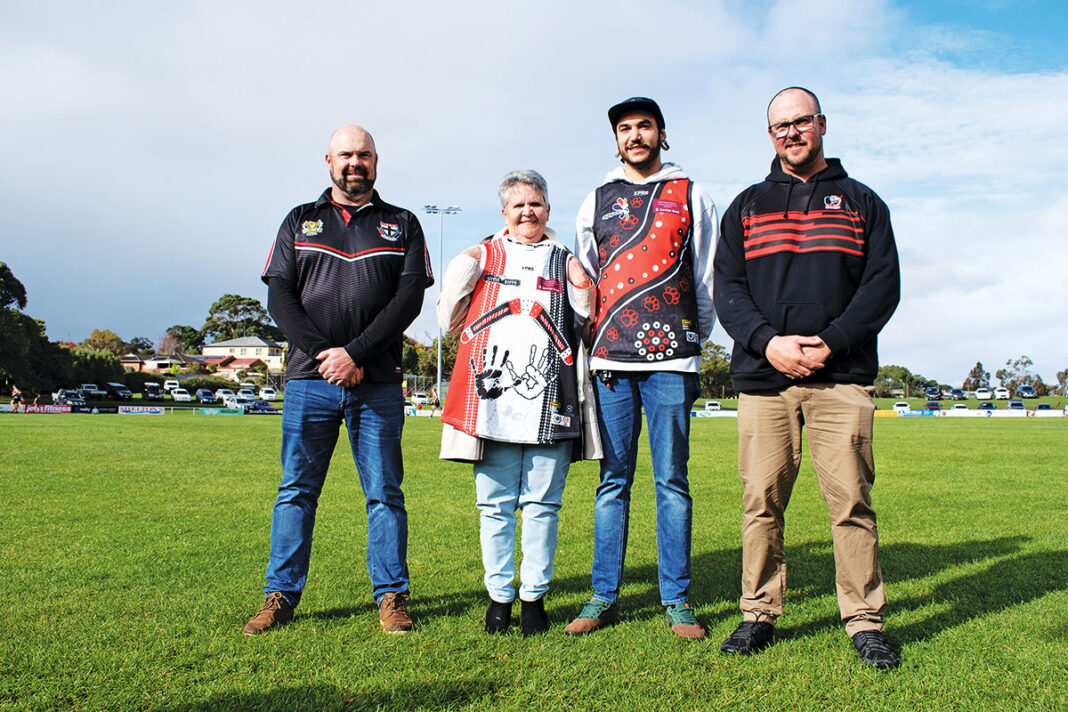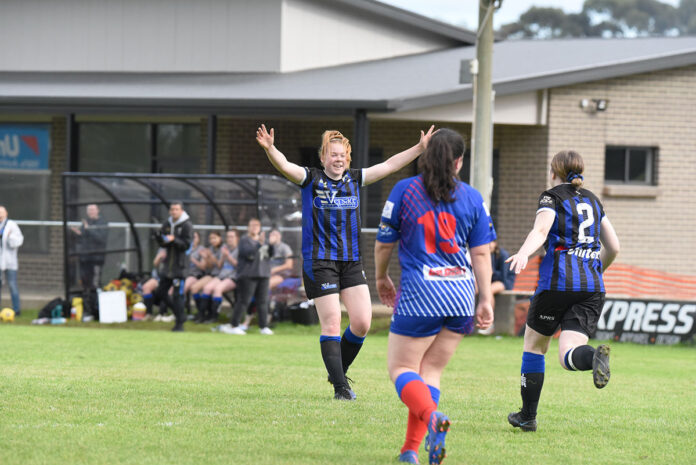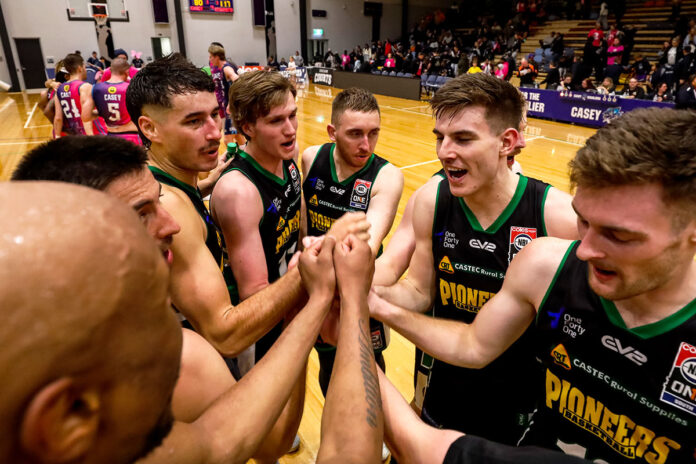Those who attended McDonald Park on Saturday afternoon will never forget the scenes they saw as the “Kennel” was transformed into the meeting place to celebrate First Nations culture.
The East Gambier versus Millicent contest carried greater significance as the A Grade Western Border football and netball fixture was just a small part of the completed ceremonies surrounding the inaugural Indigenous Game.
The rain had settled just in time for the big crowd in attendance to fill up the standing area in front of the clubrooms and take in the special celebrations ahead.
Anticipation was in the air as the football and netball players walked out onto the field in their special one-off guernseys and formed a line of honour spanning one third of the ground as Uncle Dougie played the didgeridoo and performed a smoking ceremony.
Once everyone was in position, Aunty Michelle took over and conducted a passionate Welcome to Country where she stated how important it was to use the game as a platform to tackle reconciliation with greater force in the future.
“Indigenous rounds are a great opportunity to highlight the contribution Aboriginal and Torres Strait Islanders people have made to sporting clubs and the wider community,” she said.
“They also provide the opportunity to work towards a better understanding and reconciliation.
“Let’s hope this Indigenous round will set an example for all other clubs on Boandik land.”
Throughout the pregame ceremony, the Aboriginal flag flew proudly overlooking the ground, while respective East Gambier and Millicent guernsey designers Marcus Wanganeen and Lorna Sutherland were also regular faces.
To kick off the on-field action Indigenous Bulldog Noah Gollan tossed the coin which set the stage for the big contest, but the biggest highlight was to come as Aboriginal East Gambier forward Garret Ha kicked the opening goal.
Despite East Gambier’s red-hot start, Millicent dominated the final three quarters to win the inaugural Ray Adair trophy and victorious coach Clint Gallio said it was an honour to be a part of the day.
“It was pretty special,” he said.
“We have seen it done so well by the AFL for years on the TV, so to be part of our own little day was really nice and different.
“Wearing the guernseys, watching the little ceremony and didgeridoo was all pretty cool.
“It was just a privilege.”
Although these scenes have been seen at AFL level for the last 17 years, it was just the second time in Western Border Football League history teams lined up to play an Indigenous game with Heywood and Portland conducting a celebration back in 2011.
But following the success of Saturday, talk of other clubs also conducting similar games has surfaced which is a promising sign that a full scale Indigenous round can take place across the entire competition.
Former East Gambier player, Luritja Nation man and Indigenous Game organiser George Beck said he experience many emotions watching on and wishes everyone can join in the celebrations in the future as the club and sport keeps looking for new ways to celebrate the First Nations people.
“There was a deep sense of pride amongst all present on Saturday,” he said.
“My hope is that not only will this sense of pride remain for future games at our club but that other clubs are able to experience the pride and celebration that we did.
“It is something that can be shared and expanded further into the league.
“Going forward as a club we would like to expand on what we have achieved with Millicent and possibly look to bring the game forward in the round to a twilight match.
“Other initiatives we are taking as a club is engaging the junior football and netball grades to take responsibility on raising the flags on home games.
“This will get the younger grades involved in what we hope will become an important staple of our game day routine and club ethos.”
Beck said the grand day which went seamlessly from start to finish was down to a team effort from many around the community which will have a lasting impact going forward.
“From an organisational aspect the day would not have been possible without a number of people volunteering their time and effort,” he said.
“This speaks to the innate understanding for the benefits of bringing an increased respect for culture to the game.
“It builds social capital not only for the club today but its helping build a stronger more socially cohesive and sustainable club into the future.”




